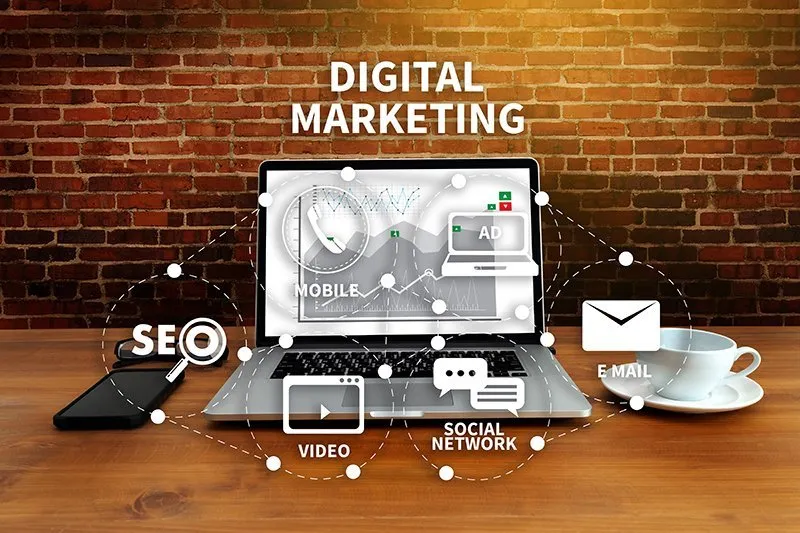Developing Executive Presence: The Art of Influential Leadership
The intangible quality that distinguishes extraordinary leaders and accelerates career advancement
Understanding Executive Presence
Executive presence is often described as the "it factor" that distinguishes exceptional leaders. While technical expertise and experience are fundamental to career success, executive presence is the quality that enables leaders to command attention, inspire confidence, and influence decisions. It's the reason some professionals advance rapidly while others with similar qualifications plateau.
At its core, executive presence is about how you communicate, present yourself, and interact with others. It's a combination of behaviors, appearance, and communication skills that signal to others that you are a leader worthy of attention and respect. While some individuals seem to naturally possess this quality, the good news is that executive presence can be developed and refined over time.
The Three Pillars of Executive Presence
- How You Act - Your demeanor, body language, and interpersonal skills
- How You Speak - Your communication style, clarity, and impact
- How You Look - Your appearance, attire, and physical presence
Mastering the Art of Communication
Communication lies at the heart of executive presence. Leaders with strong presence communicate with clarity, confidence, and purpose. They adapt their communication style to their audience and context while maintaining authenticity.
Verbal Communication
- • Speak deliberately with appropriate pace and tone
- • Use concise, clear language without jargon
- • Eliminate filler words and hedging language
- • Be assertive without being aggressive
- • Master the art of storytelling to make points memorable
Non-Verbal Communication
- • Maintain appropriate eye contact
- • Use purposeful gestures that reinforce your message
- • Adopt open body language that signals confidence
- • Develop a strong, confident posture
- • Be mindful of your facial expressions
The Art of Executive Communication
Leaders with strong executive presence excel at three types of communication:
One-on-One
Building rapport, showing genuine interest, and creating trust through focused attention and active listening
Group Settings
Facilitating productive discussions, ensuring all voices are heard, and steering conversations toward conclusions
Public Speaking
Delivering impactful presentations with confidence, clarity, and an engaging style that resonates with audiences
Developing these communication skills requires practice and feedback. Consider recording your presentations, seeking coaching, or joining organizations like Toastmasters to refine your abilities. Remember that authenticity matters—the goal is not to adopt someone else's style but to enhance your natural communication tendencies.
Cultivating Professional Gravitas
Gravitas—the quality of substance, depth, and seriousness—is a cornerstone of executive presence. Leaders with gravitas are taken seriously and their opinions carry weight. They demonstrate sound judgment, expertise, and integrity in how they conduct themselves.
Key Elements of Professional Gravitas
- 1
Subject Matter Expertise
Develop and continuously expand your knowledge base. Stay current in your field and develop the ability to simplify complex concepts for diverse audiences.
- 2
Critical Thinking
Demonstrate the ability to analyze situations from multiple perspectives, ask insightful questions, and develop well-reasoned conclusions.
- 3
Decision-Making Confidence
Make decisions with appropriate confidence, even with incomplete information. Balance decisiveness with thoughtfulness and willingness to adjust when new information emerges.
- 4
Composure Under Pressure
Maintain calm and focus during challenging situations. Respond rather than react to crises and conflicts, demonstrating emotional control.
- 5
Integrity and Authenticity
Demonstrate consistent values and principles in your actions. Be willing to acknowledge mistakes and take accountability for outcomes.
Building gravitas requires conscious effort over time. It's about cultivating substance and credibility through your actions, decisions, and how you handle challenging situations. True gravitas comes from consistently demonstrating competence and character—it cannot be manufactured or faked.
Refining Your Professional Image
While substance is paramount, appearance matters in establishing executive presence. Your professional image communicates attention to detail, respect for your environment, and self-awareness. It's not about conforming to rigid standards but about presenting yourself in a way that aligns with your role and organizational culture.
Elements of Professional Image
Attire
Dress appropriately for your industry and slightly above your current level. Ensure clothing fits well and is in good condition. Pay attention to details that communicate professionalism.
Grooming
Maintain consistent attention to personal grooming. Well-kept appearance signals self-respect and care for how you present yourself to others.
Physical Presence
Develop awareness of how you carry yourself. Work on posture, movement, and physical energy that projects confidence and vitality.
Digital Presence
Ensure your online profiles and digital communication reflect your professional brand. Be mindful of your virtual background, lighting, and demeanor in video meetings.
Your professional image should be authentic while meeting organizational expectations. The goal is to ensure your appearance doesn't distract from your substance but rather reinforces your credibility and competence.
Developing Emotional Intelligence
Emotional intelligence (EQ) is a critical component of executive presence. Leaders with high EQ understand and manage their own emotions while skillfully navigating the emotions of others. This enables them to build strong relationships, influence effectively, and lead with empathy.
Core Components of Emotional Intelligence
Self-Awareness
- Recognize your emotions and their impact
- Understand your strengths and limitations
- Develop accurate self-assessment
- Cultivate confidence grounded in reality
Self-Management
- Control disruptive emotions and impulses
- Maintain integrity and trustworthiness
- Demonstrate adaptability to change
- Drive for achievement and improvement
Social Awareness
- Demonstrate empathy toward others
- Read the emotional currents in groups
- Recognize power dynamics and relationships
- Understand organizational politics
Relationship Management
- Inspire and influence others
- Develop others through feedback and guidance
- Manage conflict effectively
- Build bonds and collaborative networks
Developing emotional intelligence requires self-reflection, feedback from others, and deliberate practice. Leaders with strong EQ create psychological safety, foster collaboration, and navigate complex interpersonal dynamics with grace—all essential elements of executive presence.
Developing Executive Presence in Virtual Environments
As remote and hybrid work becomes more prevalent, leaders must adapt their executive presence to virtual environments. Many of the same principles apply, but with important nuances for digital interaction.
| Element | In-Person Approach | Virtual Adaptation |
|---|---|---|
| Communication | Full range of verbal and non-verbal cues | More deliberate articulation, pausing, and emphasis; increased animation |
| Appearance | Full professional attire appropriate to context | Professional from the waist up; attention to camera angle, lighting, and background |
| Engagement | Natural eye contact and physical presence | Look at camera for eye contact; use names frequently; incorporate interactive elements |
| Leadership | Physical cues to direct discussion | Clear verbal transitions; deliberate facilitation; proactive inclusion |
Tips for Virtual Executive Presence
- ✓ Ensure your technology is reliable and you're comfortable with the platforms you use
- ✓ Create a professional background that reflects your brand
- ✓ Position your camera at eye level and invest in good lighting
- ✓ Eliminate distractions and background noise
- ✓ Practice looking at the camera rather than at yourself or others on screen
- ✓ Use more animated facial expressions and vocal variety than you might in person
- ✓ Be even more intentional about creating engagement and inclusion
Mastering virtual executive presence requires practice and adaptation. Consider recording yourself in virtual meetings to assess your impact and identify areas for improvement. Remember that the fundamentals—clear communication, professional demeanor, and authentic connection—remain essential.
Strategies for Developing Executive Presence
Developing executive presence is a journey that requires self-awareness, practice, and feedback. Here are strategic approaches to cultivate this important leadership quality:
Self-Assessment
Begin by honestly evaluating your current executive presence. Identify your strengths and areas for development across communication, appearance, and gravitas.
Seek Feedback
Ask trusted colleagues, mentors, or coaches for specific feedback on how you're perceived. Focus questions on impact rather than intent.
Study Role Models
Identify leaders with strong executive presence. Observe their behaviors, communication styles, and how they handle various situations.
Practice Deliberately
Seek opportunities to practice specific aspects of executive presence. Volunteer for presentations, lead meetings, or take on visible projects.
Record and Review
Record your presentations or practice sessions. Review them critically to identify habits, patterns, and opportunities for improvement.
Seek Coaching
Consider working with a communication or leadership coach who can provide expert guidance and personalized feedback.
Remember that developing executive presence takes time. Be patient with yourself while remaining committed to growth. Focus on incremental improvements rather than wholesale personality changes.
Case Study: Transforming Executive Presence
Sarah's Journey: From Technical Expert to Influential Leader
Background: Sarah was a highly skilled technical professional who had been passed over for promotion despite her excellent work. Feedback indicated she lacked the executive presence needed for senior leadership.
Challenges:
- Communication was detailed but lacked strategic focus
- Tendency to qualify statements and use hedging language
- Professional appearance was inconsistent
- Struggled with confidence in high-pressure situations
Approach: Sarah worked with a coach to develop her executive presence over six months:
- Refined her communication style to focus on key points and strategic implications
- Practiced speaking with more assertion and eliminated qualifier phrases
- Updated her professional wardrobe with versatile, high-quality pieces
- Developed techniques for managing anxiety in high-stakes situations
- Sought opportunities to lead cross-functional projects and meetings
Results: Within a year, Sarah was promoted to a senior leadership position. Colleagues noted dramatic improvements in her ability to communicate with impact, project confidence, and influence decisions.
FAQ: Developing Executive Presence
Is executive presence something you're born with or can it be developed?
While some individuals may naturally possess traits associated with executive presence, it is absolutely a skill that can be developed. Like any leadership quality, it requires awareness, practice, and feedback. Even those who seem to have "natural" presence have typically refined these skills over time.
How long does it take to develop executive presence?
Developing executive presence is an ongoing journey rather than a destination. However, targeted efforts can yield noticeable improvements within three to six months. The key is consistent practice and application of new behaviors until they become habitual.
Does executive presence mean I need to change my personality?
No, authentic executive presence builds on your natural personality rather than requiring you to become someone else. The goal is to enhance how you communicate, interact, and present yourself while remaining true to your core values and identity. The most effective leaders maintain authenticity while developing their presence.
How can I develop executive presence if I'm introverted?
Introverts can develop powerful executive presence by leveraging their natural strengths—often including thoughtfulness, preparation, and deep listening. Focus on quality of communication rather than volume, strategic contributions rather than dominant participation, and authentic connection rather than superficial charisma.
How can I get honest feedback about my executive presence?
Ask specific questions from trusted colleagues, mentors, or supervisors. Frame questions to focus on impact: "How does my communication style come across in meetings?" or "What impression do I make when I present to senior leaders?" Consider working with a coach who specializes in executive presence for objective assessment and guidance.







